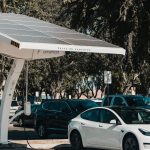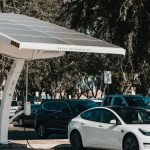Autonomous delivery vehicles are moving into the spotlight, with Starship Technologies accelerating plans to bring its robot fleets to more American urban areas. The company, which debuted its delivery robots on college campuses and in European cities, now seeks to establish widespread service in U.S. metropolitan markets. Recent developments highlight not only advancements in the technology itself, but increased investor confidence and ongoing efforts to integrate automated solutions into everyday commerce. As more consumers become familiar with robots delivering groceries and meals, the landscape of urban logistics is quickly shifting, prompting both excitement and new questions about the implications for cities, retailers, and the workforce.
Reports throughout the last two years primarily focused on Starship Technologies operating in controlled environments such as university campuses and select neighborhoods in Europe. Earlier updates mentioned expansion into grocery delivery and growing partnerships but saw slower movement toward major U.S. city centers. Previous investments were significant but did not signal as strong a push for scaling up robot fleets on the scale outlined in the current funding round. Compared to those earlier projections, the announced goal of expanding to over 12,000 robots and targeting American urban markets marks a distinct increase in ambition and capability, suggesting a shift from pilot deployments to a mainstream urban logistics model.
How Is Starship Funding Its Expansion?
Starship Technologies recently secured $50 million in Series C investment, lifting its total funding above $280 million. Investors such as Plural, Karma.vc, and others are backing the company’s expansion, supporting its objective to grow from 2,700 deployed robots to a fleet of over 12,000 by 2027. The capital is earmarked for scaling operations into U.S. cities, enhancing fleet size, and developing new partnerships with major retail and food delivery brands.
Can the Technology Adapt to Urban American Cities?
Starship’s delivery robots, already active in over 60 U.S. university campuses and more than 30 European cities, are being positioned to handle the complexities of American urban environments. The firm says it has addressed key challenges such as regulatory approvals, real-world safety, and operating in varied weather conditions, with its systems achieving SAE Level 4 autonomy. Director of autonomous driving Lindsay Roberts highlighted ongoing developments, noting,
“We are actually making double-digit percentage improvements in autonomy every year.”
What Partnerships and Services Will Define Starship’s Growth?
Starship has broadened its collaborations to include U.S. companies such as Grubhub along with European partners like Bolt, Wolt, and Foodora. These alliances allow the company to offer frequent, smaller deliveries—an approach that becomes cost-effective with automated vehicles. According to Roberts, the scale and frequency of deliveries may reshape how goods move within cities. He explained,
“We want to make the last-mile movement of goods automatic.”
Starship Technologies’ efforts reflect broader trends in urban mobility and the steady automation of delivery infrastructure. As regulatory and technological barriers continue to be addressed, cities will likely witness a notable rise in autonomous delivery vehicles. While the company’s focus remains on safety, data-driven decision-making, and real-world testing, the expansion also prompts consideration of its impact on traditional delivery jobs, local regulations, and the urban experience. For consumers and businesses, increased robot deliveries could mean faster and more flexible logistics, while municipalities will need to adapt infrastructure and oversight. Looking ahead, those interested in smart cities and urban logistics should pay close attention to the results of these expanded deployments, as they may indicate lasting shifts in how everyday goods reach consumers.










